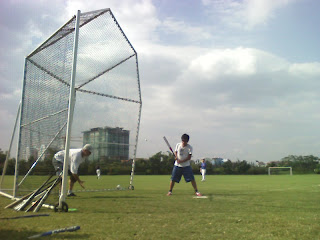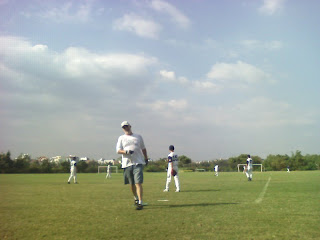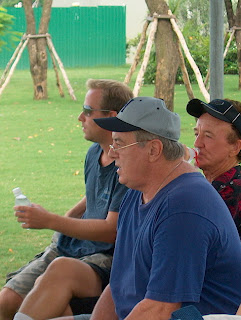Pinned Topic
Wednesday, December 19, 2007
Sunday, December 16, 2007
16 Dec 2007 softball game
- Guest team: Japan
- Home team: United States
- Field: RMIT
- Date and time : 16 Dec 2007, 1400 hours
Được đăng bởi
K
tại
6:21 AM
0
nhận xét
![]()
Monday, December 10, 2007
Photos of MLB's event
MLB's baseball clinic held under sponsors of Operating Smile, MLB, RMIT and other individuals.
Thank you so much for helping Vietnamese baseball.
See photos here
Được đăng bởi
K
tại
7:36 AM
0
nhận xét
![]()
Sunday, October 14, 2007
Lagi - Bình Thuận 14 Oct 07
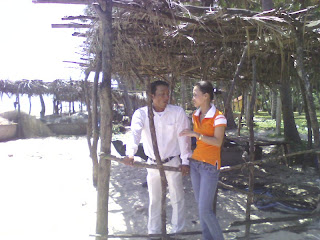 My friend's big event
My friend's big event at a land with coconut trees
at a land with coconut trees by the sea
by the sea with seafood (that's really very good)
with seafood (that's really very good) with some kid
with some kid and more naked kids playing around ... :D
and more naked kids playing around ... :D there was a nice beach house
there was a nice beach house his sister and her bfriend
his sister and her bfriend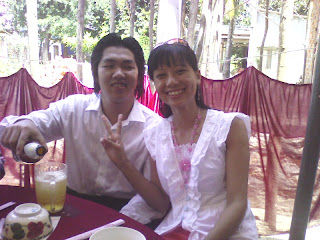 his sister and her bfriend (again)
his sister and her bfriend (again) the photographer Le Tam
the photographer Le Tam and me :)
and me :)
Được đăng bởi
K
tại
8:15 AM
1 nhận xét
![]()
Monday, October 8, 2007
Sunday game 07 Oct. 07
Được đăng bởi
K
tại
9:55 AM
0
nhận xét
![]()
Friday, October 5, 2007
Saturday, September 22, 2007
a funny game with baseball bat
You need to get a .DOC file so that you can play the game in MS Word.
download here !
My highscore is 450.6. how about yours ??
Được đăng bởi
K
tại
8:35 AM
0
nhận xét
![]()
Friday, September 21, 2007
My favorite Mime performances
Johan Lipowitz (known as Hollow men)
Torn
Torn (with Natalie Imbrullia)
That's my home
Don't look back in anger
And some others presentations
Torn (again)
Britney Spears' songs
Te-amo
So we can see that it is quite not easy to do such funny and nice things.
(all link to http://youtube.com)
Được đăng bởi
K
tại
5:59 AM
0
nhận xét
![]()
Saturday, September 15, 2007
Softball schedule-Autumn 2007-RMIT
Softball schedule
Autumn 2007
RMIT sport fields
Sep 16 2-4 PM Field 1
Sep 23 2-4 PM Field 1
Sep 30 4-6 PM Field 1
Oct 7 2-4 PM Field 1
Oct 14 4-6 PM Field 1
Oct 21 4-6 PM Field 1
Oct 28 2-4 PM Field 1
Nov 4 4-6 PM Field 1
Nov 11 4-6 PM Field 1
Nov 18 4-6 PM Field 1
Nov 25 4-6 PM Field 1
Dec 2 2-4 PM Field 1
Dec 9 4-6 PM Field 1
Dec 16 2-4 PM Field 1
Được đăng bởi
K
tại
6:12 AM
0
nhận xét
![]()
Tuesday, May 29, 2007
HISTORY OF BASEBALL (part III)
Professional baseball players had organized several times in baseball history, but they were never able to make the advances that unions in other industries had won for their members. The Major League Baseball Players Association had been around for more than thirty years, but its sole purpose had been to collect and administer a meager pension. Concerned about getting a piece of growing television revenues, the players sought to strengthen their union in 1965.
They hired Marvin Miller, a veteran labor organizer who had fought for the United Steelworkers union for years. He knew there was more at stake than adding broadcasting money to the pension fund. When Miller came on board and saw what the conditions were, he knew much more was at stake.
For one thing, the minimum salary was $6,000, just a thousand dollars more than it had been in 1947. As he began to collect data, the players were surprised at how poorly they were being paid. This education paved the way for the first collective bargaining agreement in 1968. It provided some modest improvements, but most importantly it gave the players some leverage. For nearly a hundred years, team owners had a “take it or leave it” relationship with players. The union could (and did) file complaints with the National Labor Relations Board when they were treated unfairly. Players also won the right to have their grievances heard before an independent arbitrator.
The owners did not like this. They did not like the union interfering in their business, and they did not like the players standing up to them. Curt Flood, one of the league’s premier centerfielders refused to report to training camp in 1969, demanding that the St. Louis Cardinals offer more than a $5000 raise. They relented, but after an unexceptional season, they traded him to Philadelphia. Flood did not want to go. He had strong ties to the community, and filed a suit against Commissioner Bowie Kuhn. Flood argued that the Reserve Clause was illegal, and that he should be allowed to negotiate freely with other teams. The Supreme Court ultimately ruled against him, but it made a lot of players think.
By 1975, two pitchers decided to challenge the reserve clause again. It said that the teams had the right to renew a players contract for one year. They interpreted that to be recurring, that they could renew it every year. Dave McNally and Andy Messersmith refused to sign their contracts. If the reserve clause bound them for the 1975 season, there was no contract that could be renewed for 1976. An arbitrator upheld their case, and free agency was born.
Players were still bound to a team for the first few years of their career, but after that they could sign with any team. The owners couldn’t contain their excitement at this, and spent the next five years outbidding and outspending each other. The players were happy, because everyone’s salary was going up. But many owners were getting upset. When a player left, they got nothing in return. They argued that a team who lost a player should get something in return for compensation. Otherwise, the money they had invested in that player’s development would be lost. The players argued that this would severely limit their freedom. The two sides couldn’t agree, so in the middle of the 1981 season the players walked out.
There had been a brief player’s strike at the start of the 1972 season, which delayed the start of the season by 13 days. This was much more serious, and little negotiation took place. After fifty days, the owners relented and agreed to a modified compensation plan. In return, players not yet eligible for free-agency could have their salaries decided by an arbitrator. The economic issues was growing more complicated, and the adversarial relationship between owners and players grew more intense.
In 1985, the players struck again. The owners had hoped that salary arbitration would help keep salaries down, but it propelled them through the roof. The owners wanted to change it, the players said no way. After two days, the owners relented and the players came back.
Then the free-agent market suddenly and mysteriously dried up. Following the 1986 season, players in search of contracts found no bidders, and many re-signed with their teams for lower salaries. This continued for the next few years, until an arbitrator ruled that the owners had colluded. The collective bargaining prohibited that action, and the players were awarded damages.
This all set the stage for the worst battle of all. In 1992, the owners forced Commissioner to resign. The labor contract was about to expire, and they didn’t want him to interfere in negotiations. Turns out they didn’t want any negotiations either. Their had been a strike or a lockout every time the collective bargaining agreement expired, and the players didn’t want to go through that again. They started the 1994 season without a contract. The owners were insisting that a salary cap was necessary for teams to survive. They claimed free agency and salary arbitration were wrecking them. No progress was being made, so the players went on strike in August.
The World Series was canceled for the first time in 92 years. Fans across the country were disgusted and heartbroken. President Clinton appointed a mediator, but nothing happened. Finally, the owners decided to unilaterally implement their own plan. They assembled teams of replacement players and set out to start the 1995 season without the “real” players. The players asked for and got a restraining order, prohibiting the teams from implementing their plan and forcing them to work under the terms of the old agreement until a new one was reached.
It took almost two more years for a labor deal to be reached, and it finally happened in November of 1996. While it’s too soon to tell if the deal will address the financial problems that face Major League Baseball, it does offer the hope that fans can start thinking about the game on the field once again. Baseball has fallen behind other American sports in popularity, and it will take a lot of work to regain the prominence it once held in American culture. There is a long, proud history to build on, and baseball will enter its third century with reasons for optimism.
Được đăng bởi
K
tại
7:47 AM
1 nhận xét
![]()
Friday, May 25, 2007
Danny Grave
Danny Grave, someone we already heard about.
SAN FRANCISCO — It is the bottom of the ninth and final inning at SBC Park. Danny Graves walks to the pitcher’s mound, scraping the dirt with his feet, getting ready to finish the game and secure a win for his Cincinnati Reds against the home team, the San Francisco Giants.
As the “closer” — a specialized pitcher called on to end the game — Graves walks a fine line between love and hate from fans. It’s expected for him to protect the lead for the team, to shut down any hope for the opponents to win.
If he allows runs to score and blows a “save,” he becomes the target for the frustration of the Reds’ spectators.
On this night, his team is leading, 8-7. The first batter he faces hits a fly ball to right field. One out.
Graves walks the second batter, allowing the tying run on base. Then making Reds fan a little uneasy, the third batter, Marquis Grissom gets a base hit. The Wednesday night crowd of 40,095 Giants loyalists smells blood.
Graves, however, doesn’t look fazed. He strikes out the fourth batter. Two outs. All he needs is one more.
The nail biting begins after Graves tosses three straight balls to the fifth batter, Edgardo Alfonzo, inviting the possibility of walking another batter and loading the bases. On the sixth pitch, Alfonzo hits a ground ball to the shortstop, who tosses the batter out at first. Three outs. Game over. Reds win.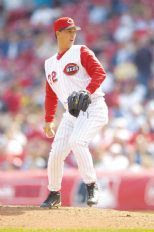
It’s just another day at the office for Graves, the first Vietnamese-born man to play major-league baseball. In his entire nine-year career, he’s been baffling batters in a sport that his countrymen have yet to fully embrace.
Daniel Peter Graves was born in the summer of 1973, the youngest son of an Army sergeant and a young Vietnamese woman working at the U.S. Embassy in Saigon. He and his family, which includes an older brother, moved to the United States when he was 14 months old.
Graves’ dad, Jim, loved baseball. Danny learned to love it, too, as a child in the Florida city of Tampa, where the neighborhood kids would pitch in the streets. At 5, he asked his parents to register him for Little League.
At first, he wanted to be a catcher but abandoned the idea.
“As a catcher, you have to be able to hit, and I didn’t hit very well, but I always had a strong arm growing up,” he remembered.
That arm propelled him through Brandon High School and earned him a scholarship to the University of Miami, where during his junior season for the Hurricanes, Graves posted a 0.89 earned-run average and led the nation with a school-record 21 saves. In 1994, the Cleveland Indians selected him in the fourth round of the amateur draft.
His mother, Thao, who teaches English to Vietnamese students in Florida, thought he was crazy for wanting to be a professional baseball player. She didn’t understand why he wanted to take up the sport for a living.
“She wanted me to have a normal job,” he said. “She didn’t know you can get paid a lot of money being an athlete and be able to take care of your family that way. Once she figured it’s a good way for people to have a career, she was OK with it.”
It’s been a more than a good career for Graves, who earns a reported $6 million a year. After two years in the minor leagues, he made his major-league debut on July 13, 1996, for the Indians against the Minnesota Twins, becoming the first Vietnamese-born player in a sport with an increasing number of Asians.
The following season, he and three other players were traded to the Cincinnati Reds. On May 20, 2004, he became the Reds’ all-time leader in saves, successfully closing out 149 wins for the team in his career. He’s been a member of the National League All-Star team twice.
At Dodger Stadium in Los Angeles, Japanese fans stand up, signs in their hands and cheer whenever Hideo Nomo runs to the pitcher’s mound or Kazuhisa Ishii stands in the batter’s box. Korean fans do the same for Hee-Seop Choi. It’s not an uncommon sight in any stadium where an Asian player takes the field.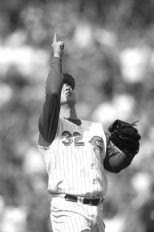
But until Graves came along, the Vietnamese were left out of rooting for one of their own.Still, despite Graves’ success, Vietnamese Americans do not flock to major-league stadiums. Other sports — soccer, tennis, basketball, football and, it seems, even table tennis — generate more fervor among the Vietnamese.
Maybe baseball is just more difficult to grasp. How many strikes constitute an out? How many outs to end an inning? What’s a sacrifice fly? With soccer, it seems easier to follow. Ball in net equals goal. Plus, in baseball, there isn’t the non-stop action other sports offer.
The lack of interest among Vietnamese hasn’t gone unnoticed by Graves. He said he would like to take his skills to the country of his birth and teach baseball.
“Any way I can introduce another sport where I came from would be nice because I know they don’t know much about it,” said Graves, who is emphatic about his love for Vietnamese food, particularly his mother’s cooking.
He also knows not a lot of Vietnamese children play Little League in the United States. A father of four, he recommends it to other parents.
“It’s a fun game,” he said. “It’s a good way for kids to interact with other people and to teach them good sportsmanship. It’s a good way to keep them away from the TV all day long. Baseball, it’s just fun to me.”
Life as a closer in the major leagues is a pressure-cooker situation. It requires being mentally tough. Graves doesn’t necessarily look the part, but he is. Blessed or cursed with the Asian quality of appearing younger than his years, Graves resembles a teen-ager, complete with blond highlights in his hair. Yet his teammates have named him “baby-faced assassin.” His ammunition of choice? A sinker, two-seam fastball, changeup and curveball.
Dr. Bill Harrison, who coaches the visual and mental aspects of the game to professional baseball players such as Greg Maddux and Jason Giambi, shares his experience working with Graves.
“It was obvious he was very much attuned to being mentally stronger than most players. And he’s not very big but he knows it’s not about being big. It’s about throwing quality pitches. Everyone says they do it but he really does it.”
And Graves hasn’t had it easy. Even though he leads the National League in saves with 37, he was placed on the 15-day disabled list on Friday with lower back spasms. This season, he has pitched nearly 62 innings, recording one win and five losses and striking out 38. His ERA is 4.09.
“I know that if I go out there one day and don’t do well, I have the next day to do better,” Graves said before his trip to the disabled list. “A lot of guys can’t handle not doing well, but I understand that’s part of the game. You can’t be perfect all the time.”
While Graves is best known nationally on the field, people in Cincinnati know him off of it, too. He is the local spokesman for the city’s National Multiple Sclerosis Society’s READaTHON program; honorary board member of Hamilton County’s Special Olympics; and was featured in a poster on behalf of the Ohio Department of Safety’s “Sober Truth” program. He also invites Little League teams serving underprivileged children to Sunday games at the Reds’ Great American Ball Park as his guests.
“He is one of my favorite players to work with,” says Lorrie Platt, community relations manager for the Reds. “I know I can rely on him for our outreach programs. He is a great representative for our team. He gives 110 percent all the time.”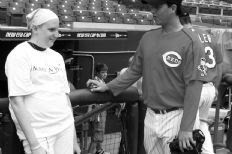 Even without the fanfare, people have noticed Graves’ giving and respectful-of-others nature, an attribute instilled in him by his parents. In 2001 and 2003, he was the Reds’ nominee for the Roberto Clemente Award, given annually to the major-league player who combines outstanding skills on the field with devoted work in the community. He also received the 2003 Lou Gehrig Memorial Award, presented annually by Phi Delta Theta International Fraternity to the major-league player who best exemplifies Gehrig’s character.
Even without the fanfare, people have noticed Graves’ giving and respectful-of-others nature, an attribute instilled in him by his parents. In 2001 and 2003, he was the Reds’ nominee for the Roberto Clemente Award, given annually to the major-league player who combines outstanding skills on the field with devoted work in the community. He also received the 2003 Lou Gehrig Memorial Award, presented annually by Phi Delta Theta International Fraternity to the major-league player who best exemplifies Gehrig’s character.
“I’m not out to get publicity for doing certain community service,” he said. “If I go out and make one group happy or one little kid happy, I feel like I did something right. It makes me feel better to help somebody out.”
Photos courtesy of the Cincinnati Reds
(by Denise Nguyen - Nguoi Viet online)
K's note : I am Not his fan. sorry.
Được đăng bởi
K
tại
6:55 AM
0
nhận xét
![]()
My broken webpages :(
Today i suddenly found my forgotten sites hosted years ago... surprisingly, they still exist.
Thank God and thank you all ....
1- http://www.freewebs.com/saigonbaseball/ (just for references, since this one is in Vietnamese)
2- http://www.baseball-teams.com/teams/saigon/ (a free ready-to-use site for all baseball teams)
3- http://www.baseball-teams.com/teams/Saigon/index.cfm?method=photoalbum (photos galleries, inside the No.2 sites)
Được đăng bởi
K
tại
6:32 AM
0
nhận xét
![]()




